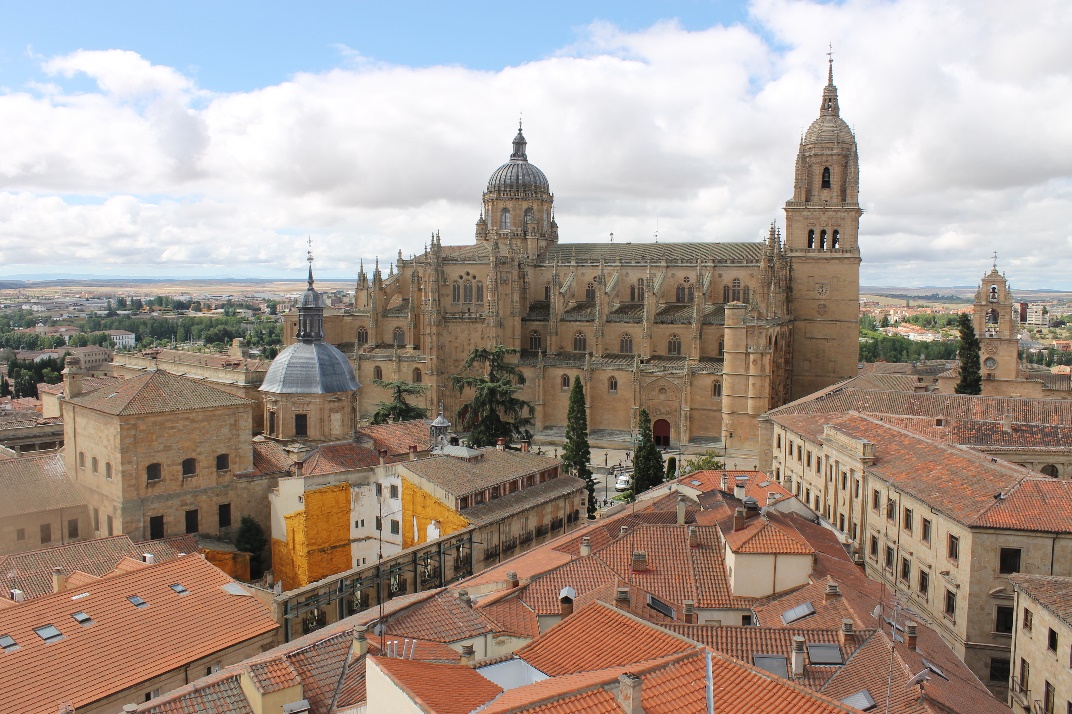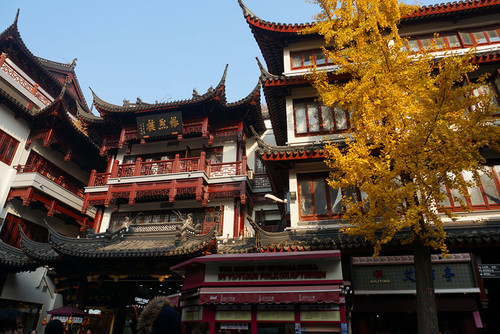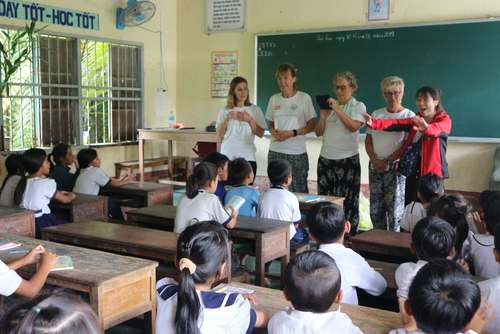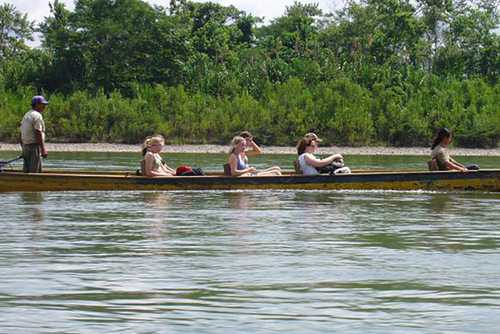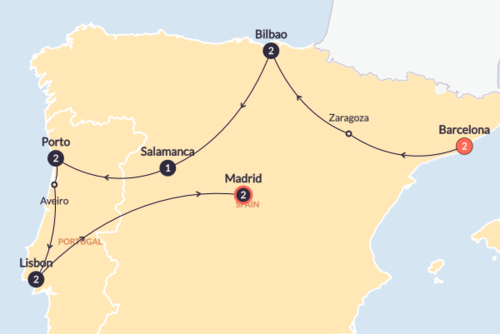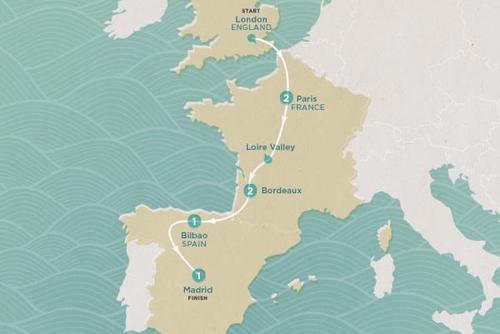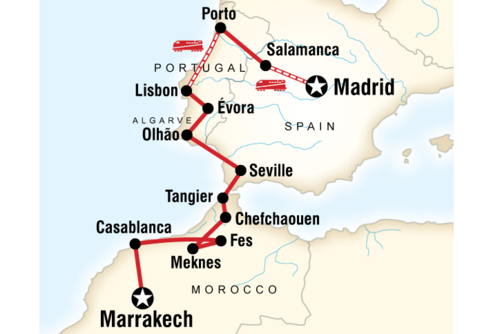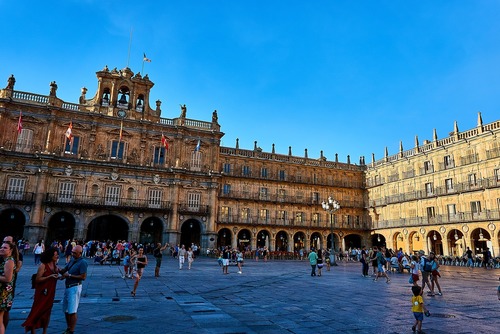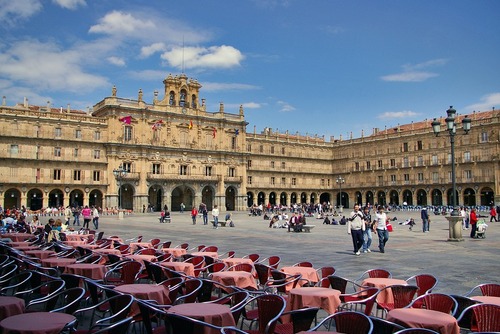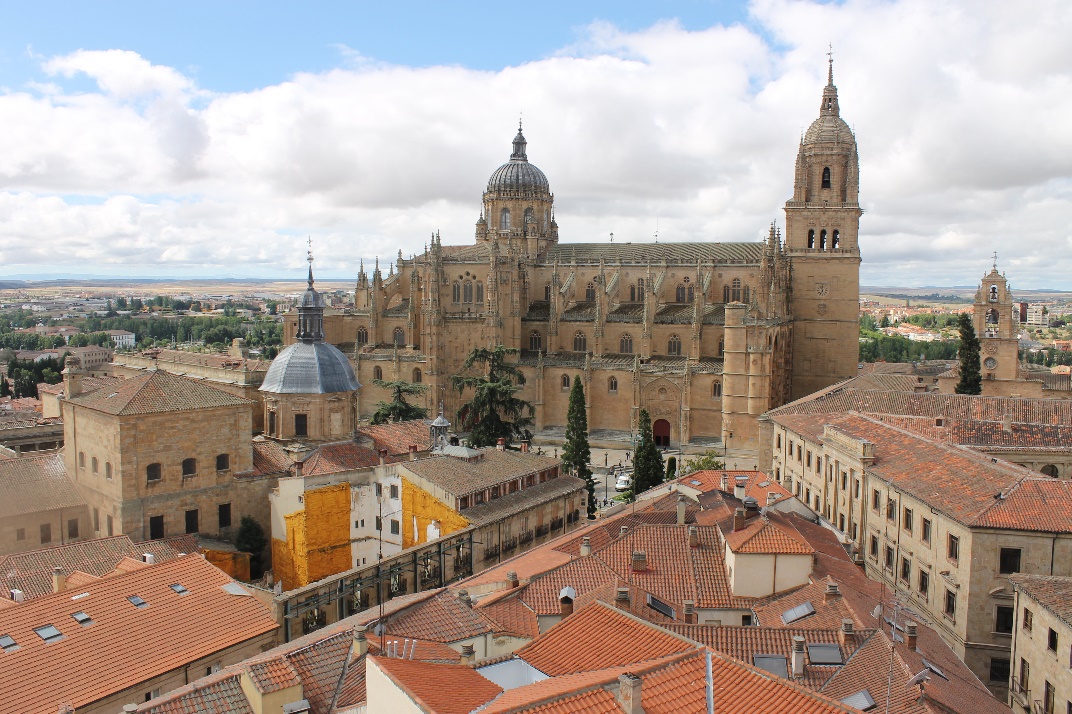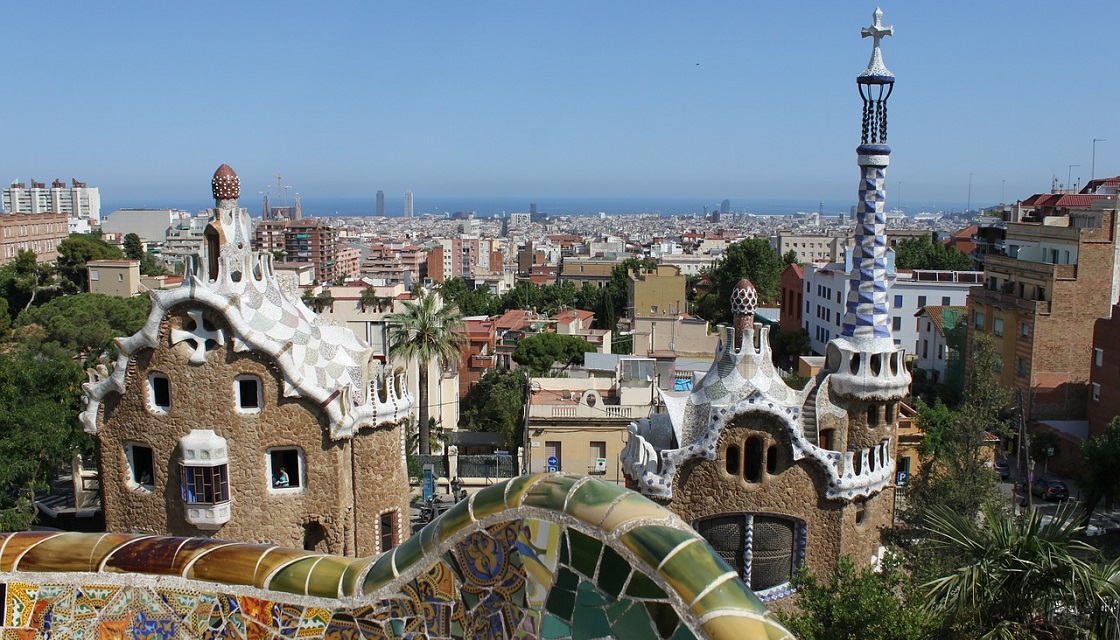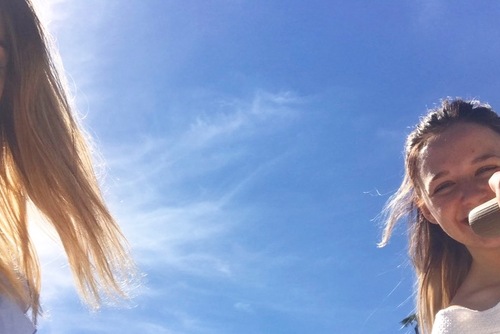But what’s actually in store for you when you get there?
Follow some of the suggestions below and you’ll spend your nine months discovering this beautiful ciudad de oro (golden city) rather than sitting inside watching Spanish daytime TV (although that is another gem definitely worth discovering).
Top Tips Before Departing
A few quick tips: before you fly out, check you’ve got the right travel insurance to cover you for any luggage you might lose, injuries you might sustain, or anything else that could conceivably go wrong.
Your university may have suggested a particular insurance cover, but otherwise have a browse on the internet and run it past your uni. Salamanca University requests that students purchase their own insurance (about 30 euros), although I found that the insurance suggested by Bristol University was sufficient.
Therefore, you can bring a copy of your own insurance to the International Office to show that yours includes the same coverage.
Make sure your passport and EHIC card are up to date and won’t expire before your time in Salamanca runs out. Check online lists for a full checklist of documents you’ll need to bring with you.
A 12 Month Guide to Salamanca
September – Feria
Salamanca starts off the academic year with a bang (literally, with a firework show) as it celebrates its yearly feria in honour of the Virgin de la Vega.
This week-long celebration takes place in the second week of September and consists of an abundance of food and drink stalls, concerts in the Plaza Mayor at night, and traditionally-dressed Salmantinos (the word used to describe Salamanca folk) livening up the town with performances.
The feria is the perfect opportunity to socialise on a warm September evening with newly made Erasmus friends. Enjoy a caña/jarra of lemon beer (a caña is a small glass, while a jarra is usually 500ml) or tinto de verano, a pleasant refreshing drink similar to sangria but without the fruit.
October – Night in the Plaza
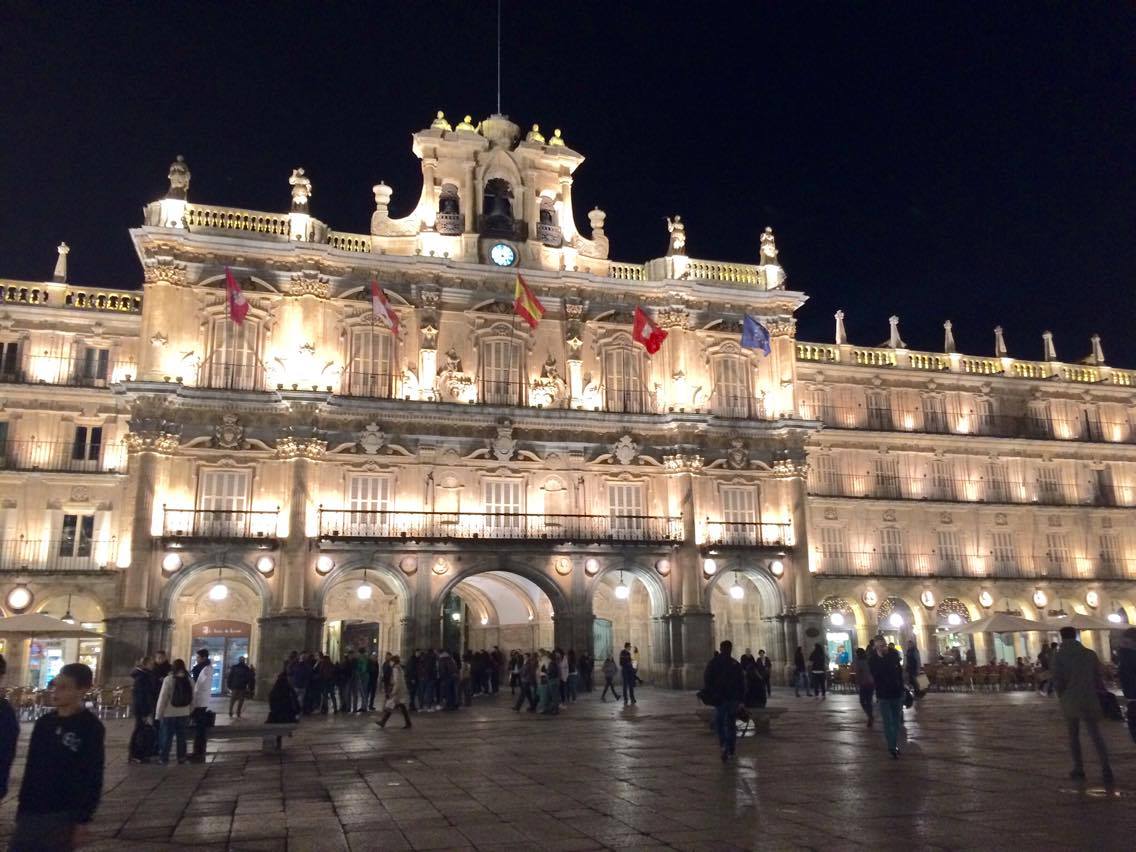
October in Salamanca is far different to England. One weekend it’s 25 degrees and you’re sipping a cerveza on a terrace, and that Monday you’re questioning if a scarf is necessary for the morning walk to uni.
The leaves seem to change from green to red overnight and hey ho, summer’s over. So make the most of it before it ends by spending an evening in the Plaza Mayor.
The Plaza is Salamanca’s central feature and deserves its reputation as one of the most beautiful in Spain. While it’s stunning during the day, at night it transforms into something else.
Get a frozen yoghurt or an ice cream at one of the numerous parlours around the Plaza and sit on one of the benches, or even on the ground as most Spaniards seem to opt for, and savour the atmosphere.
November – Churros
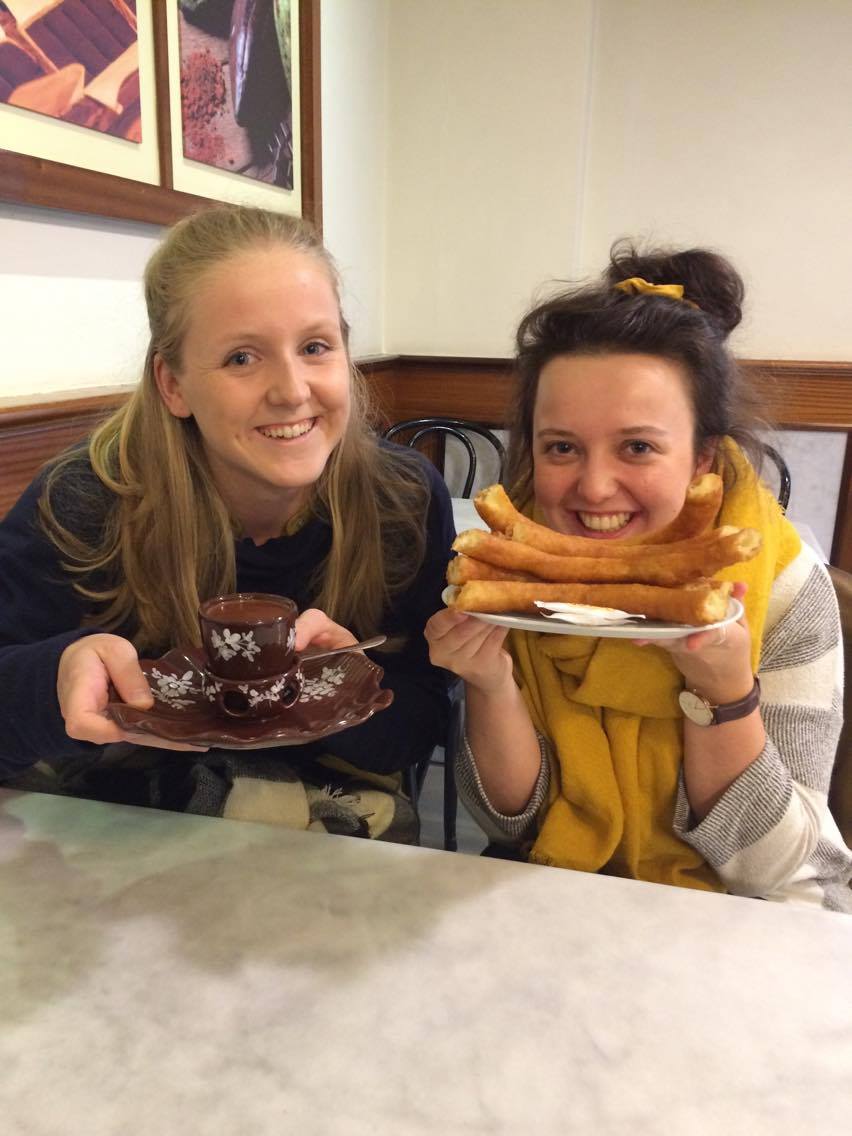
November means winter’s approaching, even in Salamanca.
Despite friends thinking I’d return from my year abroad an entirely different skin tone, the reality meant chilly winter months. Dropping temperatures can only mean one thing: churros.
While there is a range of eateries to choose from, you’ve got to consider what you want from the churros experience. If it’s a pleasant bite to eat alongside a catch up with mates, Café Valor is what you’re looking for.
This slightly more sophisticated establishment attracts tourists but also Salmantinos and Erasmus students keen to enjoy the dreamy coffee and churros combo accompanied by a choice of chocolate sauce – the chocolate orange one should be illegal it’s so moreish.
However, if it’s some 6am greasy sustenance after a night out you’re looking for, churros vans are for you. Those wafts of deep fried food drifting past your nose will find you as you leave a bar and have you adapting your route home to stop by a churros van for some warm sugary satisfaction.
NB. To minimise confusion, it’s worth knowing that churros are the smaller version of what are otherwise known as porros (also the word for a joint, so be careful!) which are larger but lack the ridges that churros have.
December - Nochevieja
Not heard of Nochevieja? You will. Scribble the 14th December into your diary because while it may not be known globally, within Spain people travel from cities across the country to attend this renowned event.
Nochevieja, meaning ‘New Year’s Eve’ consists of thousands of people filling the Plaza Mayor at night to count down to midnight. The event started in 1999 when a group of university students wanted to celebrate New Year’s with uni mates, so decided to create an earlier version of New Year’s Eve in order to enjoy it together.
It has been running since and is now a full-on operation, with every entrance to the Plaza lined with barriers and police. It’s a good idea to have a drink or two at home before as drinking in the streets is prohibited and any alcohol taken into the Plaza will be taken off you.
If you don’t like crowds, then Nochevieja is not the one for you; an estimated that 40,000 people fill the square. It is, however, a great night with music blasted out from the large stage set up specifically for the event, and students joyous at the prospect of the Christmas holidays after a long term.
January – Walk By The River
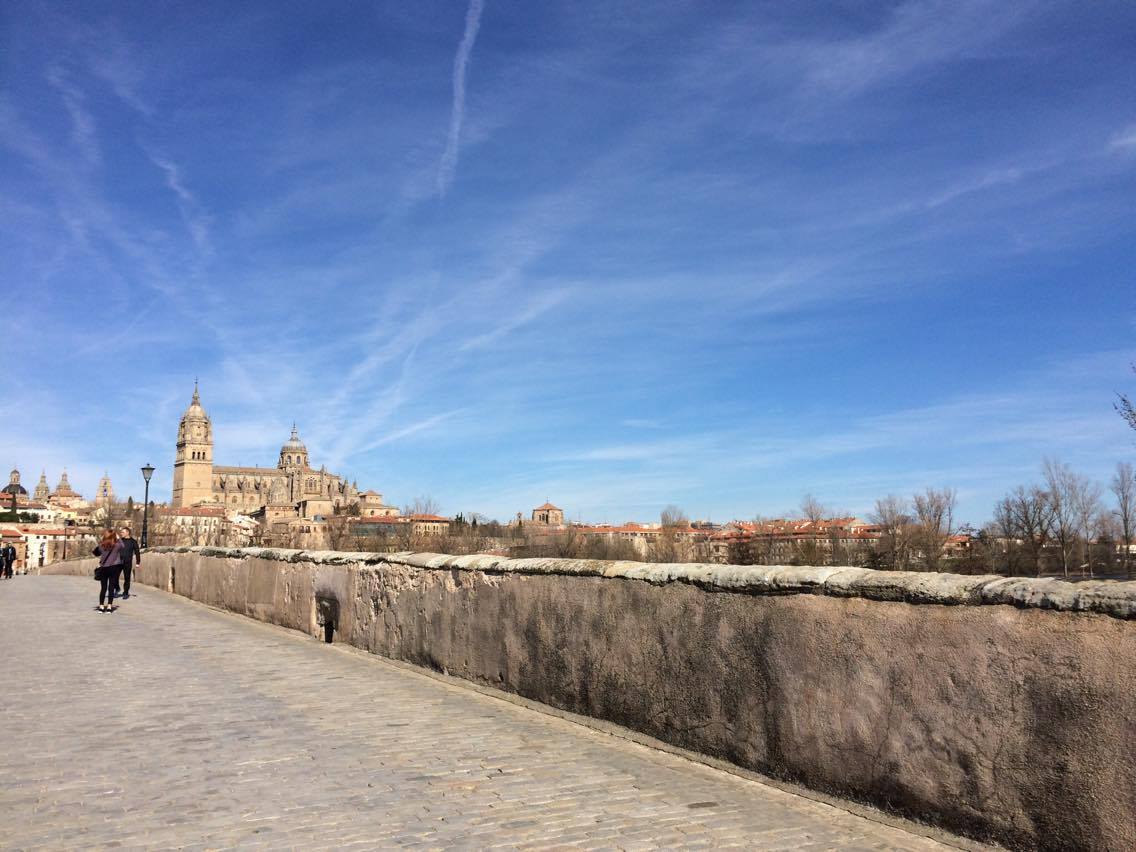
As when you travel to or return anywhere, it’s a good idea to check the FCO’s advice about Spain before flying back to Salamanca after the Christmas holidays.
Once you’re back, January translates as exam month. Exams in winter are never fun, especially when you have to revise in poorly-heated libraries and start relying on numerous café con leches a day to keep your body temperatures and morale up. One way to brighten up long revision days is going for a walk down by the river.
Start by crossing Puente Romano, the most ancient bridge crossing the River Tormes which is also the only pedestrian bridge.
There is a path along both sides of the river which you can walk along and take in the views of the magnificent cathedral as you look back to the city.
While a walk is especially refreshing during exam season, it can also be highly enjoyable on a Sunday afternoon after going out Saturday, followed by a warming café con leche in one of Salamanca’s many welcoming cafes.
February – Casa de Lis
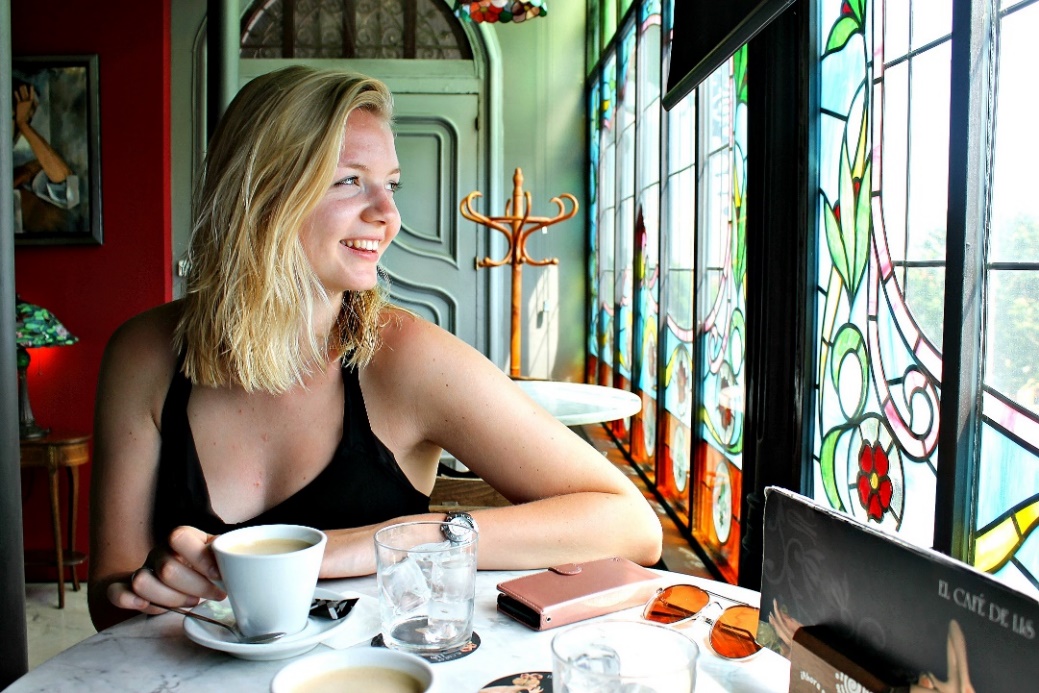
February was a weird one in Salamanca, with the first two weeks consisting of weather warnings for high winds and heavy rain, and the final weekend reaching 27 degrees.
A lovely way to spend a few hours inside is the Casa de Lis, Salamanca’s art nouveau museum. The building itself is a work of art, with an elaborate decorative glass façade facing the river.
Entrance costs 2 euros with a student card, or is free on what Spaniards describe as Thursday “morning” between 11am and 2pm.
The museum hosts a weird and wonderful collection of items, from dolls with three faces, to grand antique wooden furniture. Wander round the museum then take the time for an obligatory stop at the café, situated on the ground floor, and enjoy a café con leche as your eyes soak up the views of the river through the stunning stained-glass wall.
March – Barrio del Oeste/ International Woman’s Day March
The perfect month for a march (/stroll) around Barrio del Oeste, and/or to join in on the International Woman’s Day March.
As the sun starts shining, head over to Salamanca’s street art neighbourhood and wander round the many vibrant and colourful streets. It’s the perfect location for an edgy Instagram or new profile picture if you’re looking to up that year abroad social media presence.
Another slightly different activity to take part in is the march on International Woman’s Day on the 8th March. Despite having never attended a political march before, a few of us were keen to go and ended up overwhelmingly impressed by the scale of the whole event.
There were women and men and children and babies, all united as we walked down Calle Toro and into the Plaza Mayor, where speeches took place. It’s worth going just to see that many people filling the Plaza (not quite Nochevieja level but still impressive) and you’ll probably learn one or two Spanish feminist chants along the way.
April – Lunes de Aguas; Go Watch a Semana Santa Procession
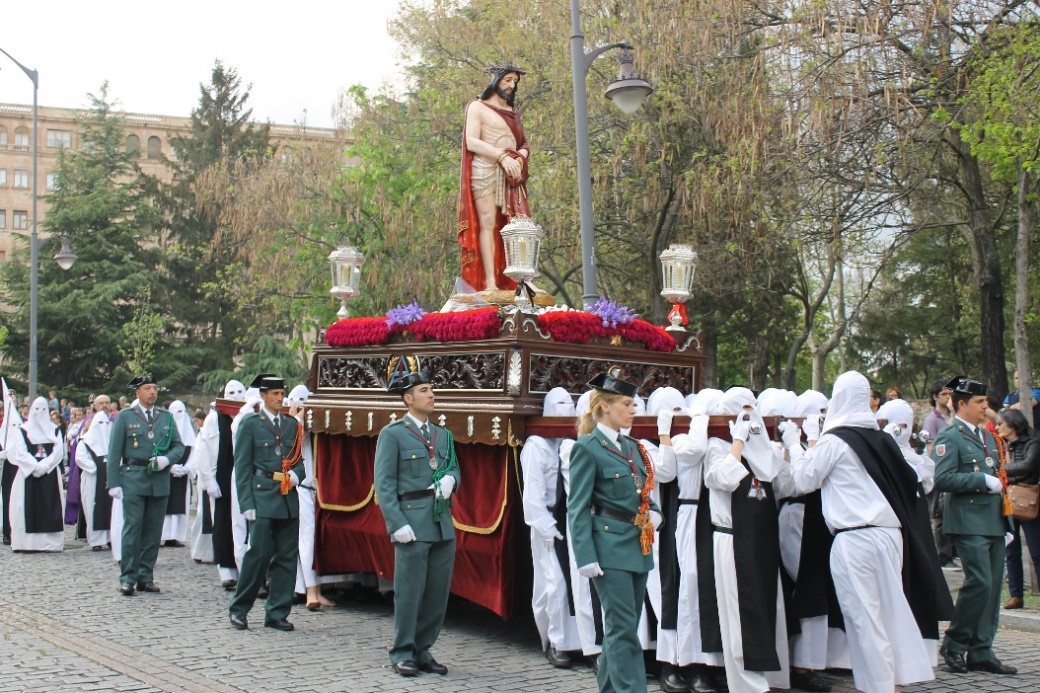
Like March, these two suggestions for April go hand in hand. April in Spain holds perhaps more importance than in the UK given the still relatively persistent presence of religion.
Easter week, known as Semana Santa (week of the saints), is celebrated across Spain with processions and religious ceremonies which differ according to the character of the city.
Salamanca provides a more austere version of Semana Santa with sombre music and participants dressed in outfits bearing an unfortunate resemblance to the robes and hats generally associated with the KKK.
Along with Semana Santa comes Lunes de Aguas, a regional holiday celebrated on the Monday one week on from Easter Sunday.
Legend has it that its origins date back to the 16th century, when King Philip II ordered the city’s prostitutes to be banished to the other side of the River Tormes after being shocked at the city’s depravity.
Festivities took place on the Monday after Lent had ended, including a swim in the river, hence the name Lunes de Aguas. Nowadays, the day is celebrated by thousands of Salmantinos lining the banks of the river drinking and eating hornazo, a meat-filled pastry originally from Salamanca.
While much like a pasty, an hornazo is not for the faint-hearted, with three different meats making up its filling. To taste this stodgy yet satisfying snack, head to Viandas de Salamanca at the bottom of Rua Mayor.
Whether with an hornazo or not, going down to the river is a must for anyone in Salamanca on Lunes de Aguas – bring some refreshments, speakers, and friends, and a great day is guaranteed.
May – Pedalos & Bikes
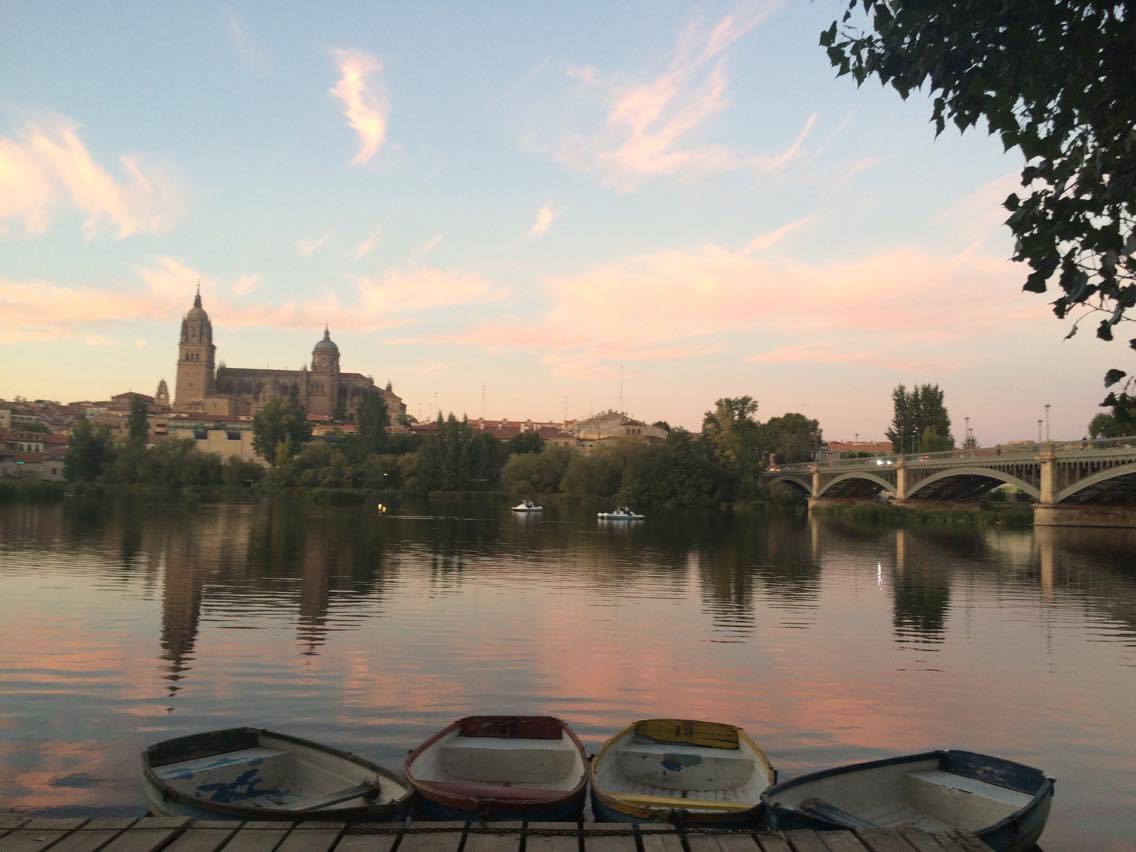
While May means exam time for many, it doesn’t mean an hour or two can’t be spent making the most of the outdoors as temperatures start seriously improving.
Gather some friends together and rent a pedalo down by the river. It’ll cost 15 euros per boat, which divided by four is definitely good value for an hour’s worth of pedalo-filled fun as you savour the beautiful views of Salamanca from below while pedalling along the calm waters of the Tormes.
Another great way to spend a warm afternoon before the temperatures get too hot in June is renting a bike. Bikecicletas on Calle Traviesa is a great place to rent from, with their friendly staff ensuring you’re equipped with all you’ll need to discover that bit more of Salamanca than you can by foot.
Top tip: Bikecicletas closes for siesta so if you arrive after 1pm to rent with a big smile, you’ll be able to rent a bike until 5pm when they open again, for the price of 2/3 hours. If you’re a USAL student, the uni also offers a bike rental scheme for very reasonable prices, with their office situated opposite the bus station.
June – Pool
The stifling temperatures that accompany the arrival of June make it the perfect month to take a trip down to one of Salamanca’s many pools.
Most outdoor pools only open in June (have a look online beforehand for specific dates) but while there are a few, the San Jose pool really stands out.
Offering views of the cathedral and a large pool surrounded by deck chairs and a café selling cold drinks and ice creams, there’s no better way to escape the 35 degree heat. The pool is about a half hour walk from the centre of Salamanca, or you can catch one of the buses that stop just outside.
Once you’re there, entrance costs a few euros but is not limited by time, so arriving early and spending the day in and out of the water can be a refreshing way to relax as you approach the end of the academic year.
And there you have it, a month by month guide to exploring the ‘golden city’. Take as many suggestions on board as you wish and hopefully any or all of them will help share the hidden gems that Salamanca has to offer.
If you do encounter any problems when in Salamanca, the British Embassy in Madrid can be an important point of contact, although the Foreign Office does have consulates across Spain which provide support to British nationals if you’re travelling.
Apart from that, all there’s left is to wish any reader the best of luck in endeavouring to take part in the above activities, and in the mission of becoming a true Sala-fan-ca!
Study abroad in Spain is a magical experience and if you are looking for a destination there are so many reasons to study in Salamanca, I loved my time in the city and there is so much to do. Spanish schools in Salamanca also offer courses all year round if you would like to improve your language skills.

